ChatGPT is a great productivity boost and assistant for bloggers.
When used right, it can save minutes from your daily workflow and help get past writer’s block.
Let me show you some ChatGPT prompts you can use to save some time and get more done.
I will also teach you how to use ChatGPT efficiently and what are some things to keep in mind and avoid.
Let’s jump in!
This post is not written with ChatGPT. At the end of this post, I tell you why I don’t use ChatGPT that much.
Quick Recap: What’s ChatGPT
ChatGPT is the first AI-based language model that generates text indistinguishable from human-written content.
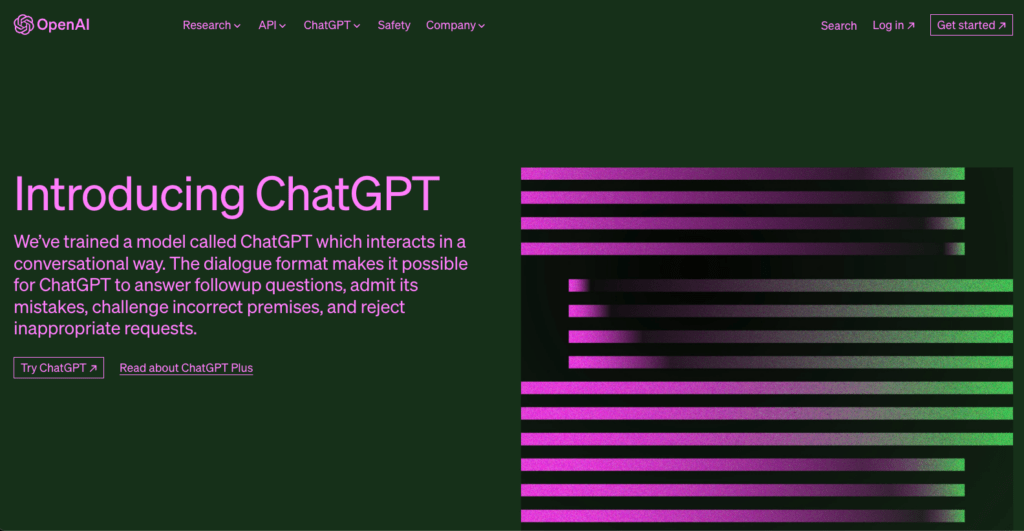
Basically, it’s a computer model that generates unique and original text out of thin air.
Many bloggers and content creators started using this technology in their everyday workflow in 2022 when this model was first released.
While this sounds like a major breakthrough in blogging and SEO, there are huge limitations to it.
For example, the content that ChatGPT produces is too shallow to rank on Google.
Bloggers still need to do most of the work—just like they’re used to.
But a tool like ChatGPT can be a nice productivity boost and save some minutes every day!
How to Use ChatGPT as a Blogger?
Using ChatGPT is simple.
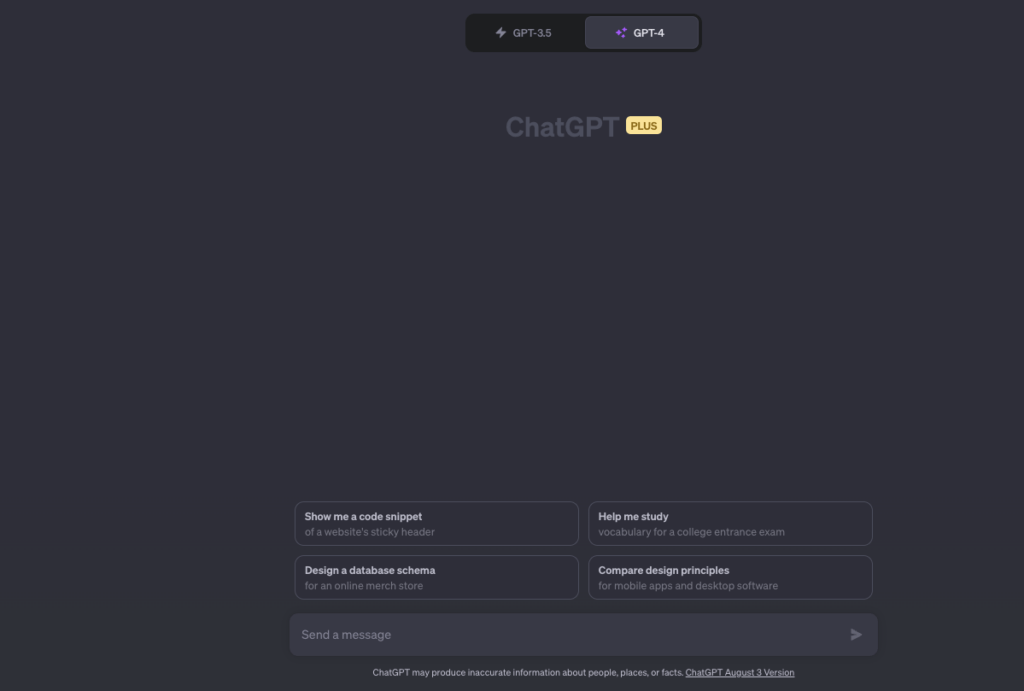
Open up the chat window and ask ChatGPT to do anything you can imagine.
However, before you ask it to write a post from A to Z, you need to remember that it’s just a tool—not a human that’s capable of thinking.
Let’s say that a blog post that ranks and gets visitors needs to be at least 8/10 in quality.
Now, a beginner ChatGPT user can probably generate a post that’s 2/10 in quality.
Then, someone who’s skilled in prompt engineering might be able to get that score to 3/10.
But that’s not even close to the quality that it would require to rank high on Google.
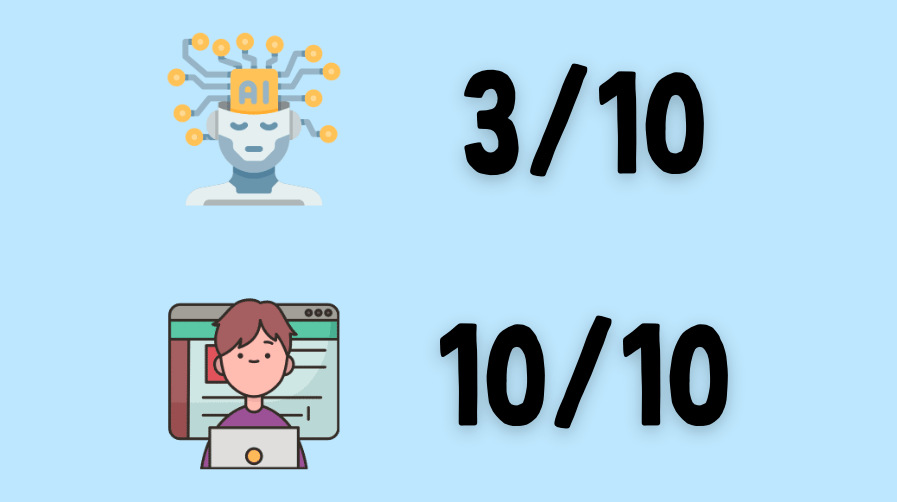
I think this is important to understand before continuing to read the post.
After reading this guide, you’ll know how to save some minutes with ChatGPT in blogging.
But it’s definitely not going to have any impact on how your blogs rank on Google.
That’s not because this is a bad guide. It’s simply because, at the moment, it’s not really possible.
That being said, let’s get into the prompts!
ChatGPT Prompts for Bloggers
Here are some ChatGPT prompts for bloggers.
Remember, these prompts are not absolute. You can tweak them however you like and add more information to the prompts.
#1 Idea Generation Prompts
Prompt 1
Can you generate talking points for a blog post about [topic]? Consider everything possible related to [topic] that might be useful for the reader.
How to Use It
I use this type of prompt pretty often.
Although, I don’t necessarily copy-paste the talking points into my posts.
Not because there’d be anything wrong in doing that, but simply because those are usually a bit off.

The next prompt kind of does the same thing but from a different angle.
Prompt 2
I’m writing a blog post about [topic]. Can you ask any questions that a person might have related to this topic or closely related to it? My goal is to write a comprehensive blog post about this topic that ranks high and provides more value than any one of my competitors.
How to Use It
I used a similar prompt once I wrote a post on How to do keyword research.
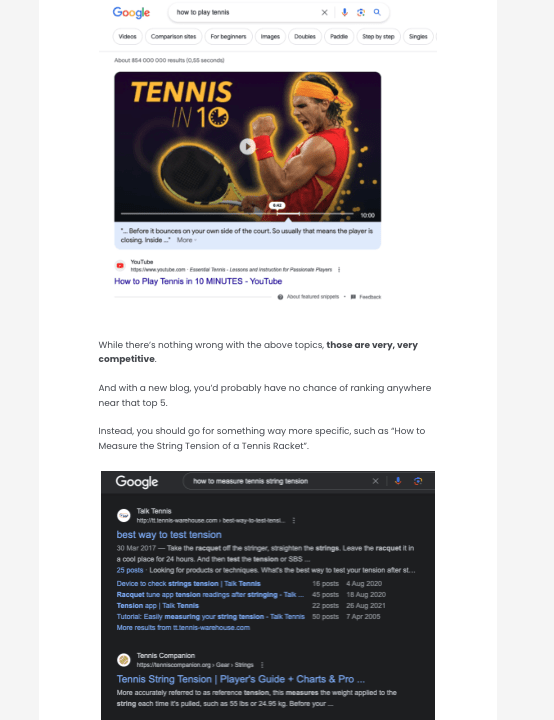
Because it’s something I’ve done 1,000+ times in the past 3 years, I couldn’t really explain it in simple terms.
I had a blank-page syndrome—even with such an “easy topic” for me.
I simply forgot how to explain the topic to a beginner and what to include in the post.
Thus, it was really helpful that I could just ask ChatGPT instead of conducting an interview.
So these types of idea-generation prompts are not to act as a shortcut. Instead, they give you great ideas and remind you what things are useful in your niche and related to your topic.
#2 Content Creation Prompts
Prompt 3
I’m writing a blog post about [topic]. Can you turn my bulleted list notes into blog post sections? Keep out the jargon and only write things that actually provide value to my readers.
How to Use It
This is a trick you can use to streamline your workflow a bit.
Let’s say you’re reviewing a table and have taken notes like:
- Easy to install
- Withstands heavy stuff
- Cheap for students
You can enter those notes for ChatGPT and ask it to turn those into chapters of your blog post.
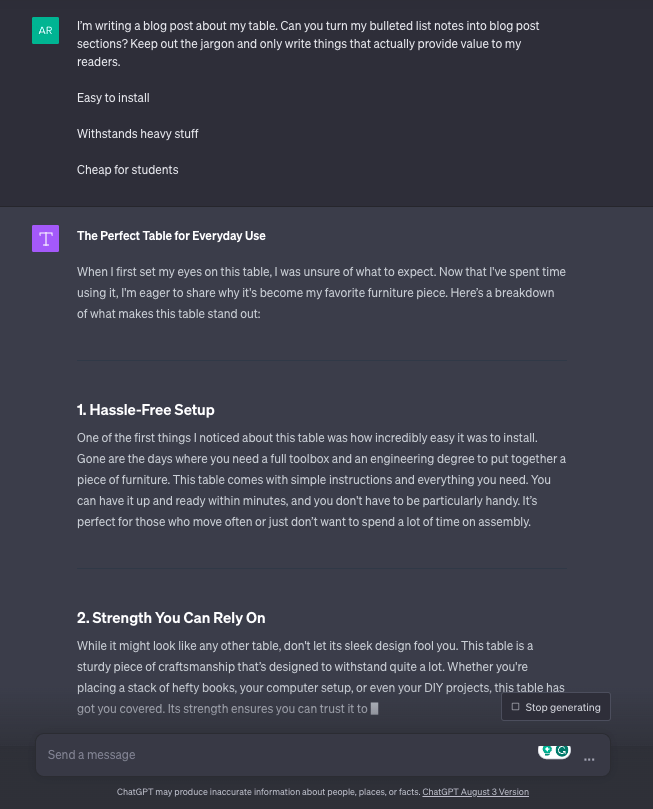
The only problem is that by doing that, ChatGPT doesn’t really add anything new to the table. Instead, it can just add extra jargon that you don’t want.
You can also ask ChatGPT to just polish your notes to be suitable for a post.
Nonetheless, by doing this, you might be able to save some time in writing. You don’t have to worry about silly words or typos as ChatGPT will pick those up.
Prompt 4
How can I make the introduction to my post on [topic] more engaging yet short and concise so that it doesn’t turn my visitors around?
How to Use It
The intro of a blog post is an important part. This is because if the intro is not convincing, people might turn around.
The intro needs to be short and concise. But it should still tell the visitor exactly what they can expect from the post.
This is where you can use ChatGPT for your assistance.
I rarely do this, but sometimes when my intro is not quite there, this can help. At least, it can give some inspiration!
Prompt 5
Can you help me draft a conclusion for my article about [topic]? Avoid jargon. Just summarize the key points based on the following: [paste your blog post content or highlights here]
How to Use It
These days, ChatGPT inputs are allowed to be quite long. Y
ou might even be able to fit your entire blog post into one ChatGPT message.
This is good because you can ask ChatGPT to help come up with a conclusion section.
Some people read blogs and papers by just looking at the intro and outro.
Thus, it’s important to add a conclusion that quickly recaps what the post was all about.
ChatGPT can help you with this. But remember to check what it has to say instead of randomly trusting it.
For example, here’s a conclusion ChatGPT came up with for my blog post about What Do Bloggers Do?
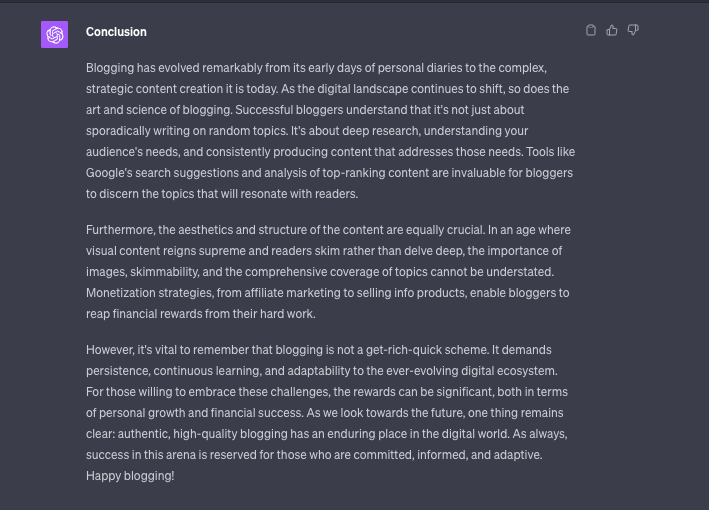
Ok, that’s too long.
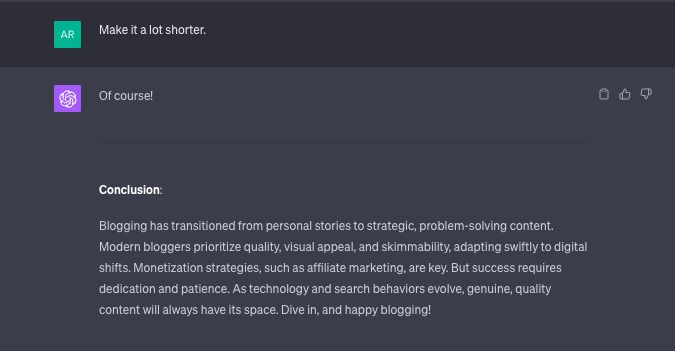
#3 Editing & Refinement Prompts
Prompt 6
Suggest a more concise/simple way to phrase this [given sentence/paragraph] so that it would answer the reader’s question more quickly. Don’t remove any information from my input.
How to Use It
Do you tend to add jargon to your blog posts?
I sometimes do.
Also, I sometimes tend to accidentally overcomplicate things.
When I do, it’s always helpful to ask ChatGPT to compress the chapter or section to be more concise.
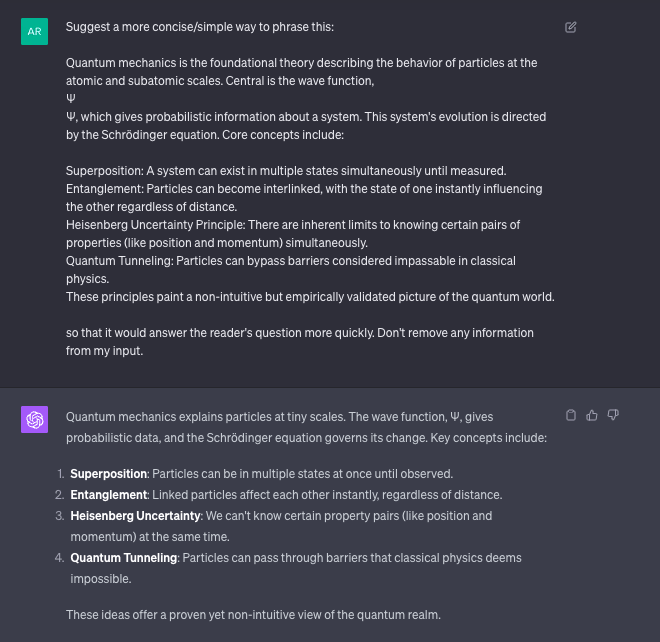
At the end of the day, every post should solve a problem—as quickly as possible.
To accomplish this goal, your post needs to be detailed but concise.
What would be a better way to ensure this than by asking ChatGPT to rephrase your content?
Just be careful it doesn’t remove any information or misinterpret your content.
Prompt 7
What are some understandable/easier synonyms for the word [specific word] in this context?
How to Use It
This is closely related to the earlier prompt.
If your text repeats words or has some hard-to-understand vocabulary, you can ask ChatGPT to suggest better synonyms to use instead.
This once again makes the post easier to understand and provides value quicker.
Prompt 8
Give an emoji that best relates to [subject/word/topic]
How to Use It
ChatGPT is very good with emojis. You can ask it to give an emoji that best relates to a particular word or sentence.
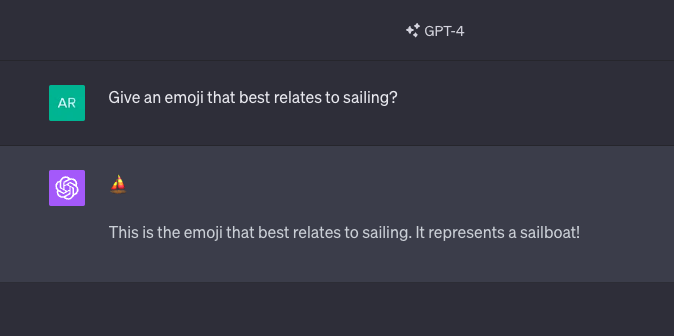
For example, to make your lists look a bit fresher, you can enhance them with emojis.
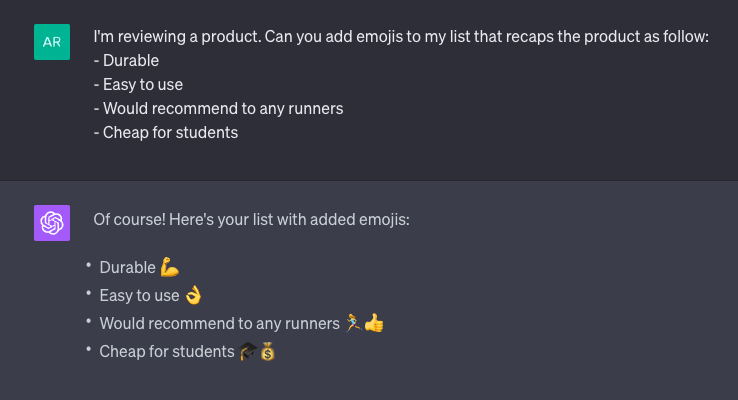
The problem is that if you do this, it takes time to come up with descriptive emojis.
But if you use ChatGPT, it’s a breeze!
#4 Reviews & Critiques Prompts
Prompt 9
What are the points to consider when reviewing [product/service]? My goal is to rank #1 on Google with this post, so it needs to be comprehensive and consider every aspect of the product.
How to Use It
If you’re writing a blog post that reviews a product or service, you can get an idea of what to consider in the review by asking ChatGPT.
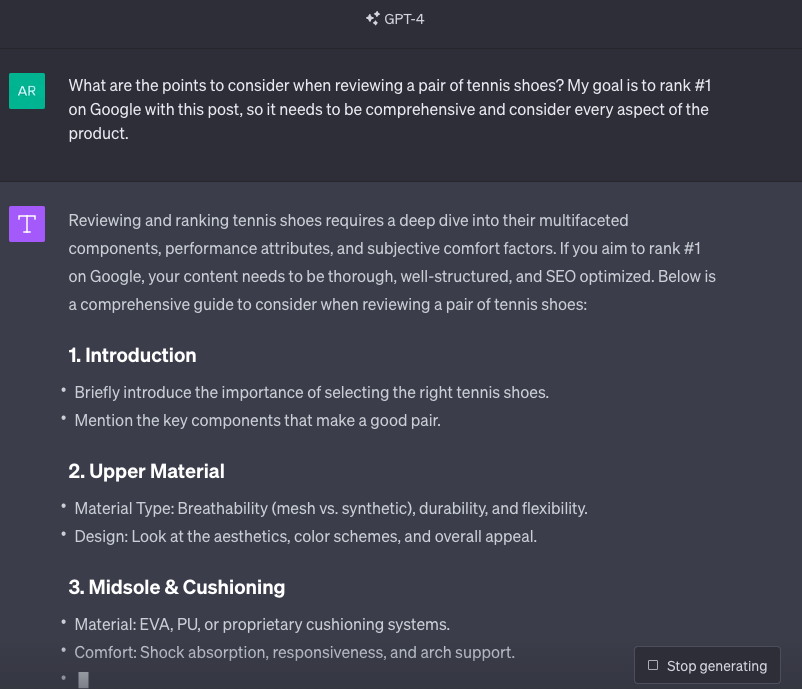
Although, you should also check what your competitors have written about that topic. This way, you ensure higher chances to rank in search results.
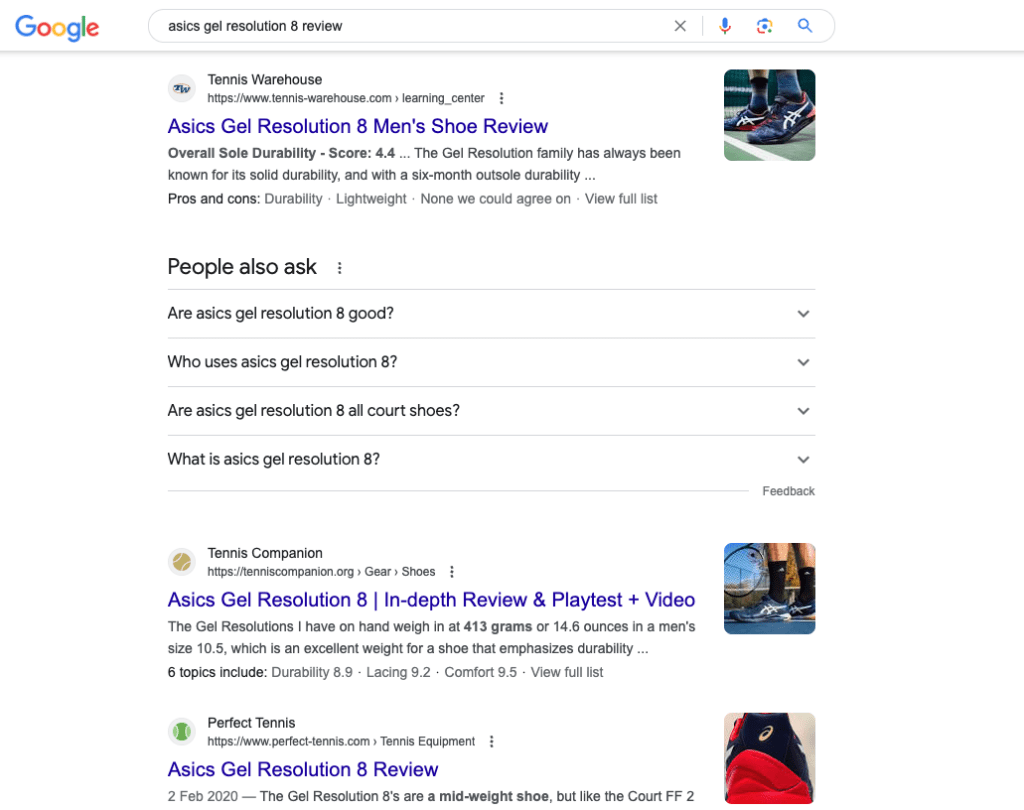
Combine some basic search analysis with ChatGPT output and you’ll write epic reviews.
#5 Visual & Multimedia Content Prompts
Prompt 10
Give me ideas for infographics related to [topic] that would actually provide value to my readers and help them understand the message?
How to Use It
Adding images to a blog post is a must these days.
No one will read a wall of text. Nor will Google rank that type of content in search results.
In many topics, you have no chance to rank high unless you have a ton of images.
And not just any images.
Those need to be directly related to the topic and actually support the learning.
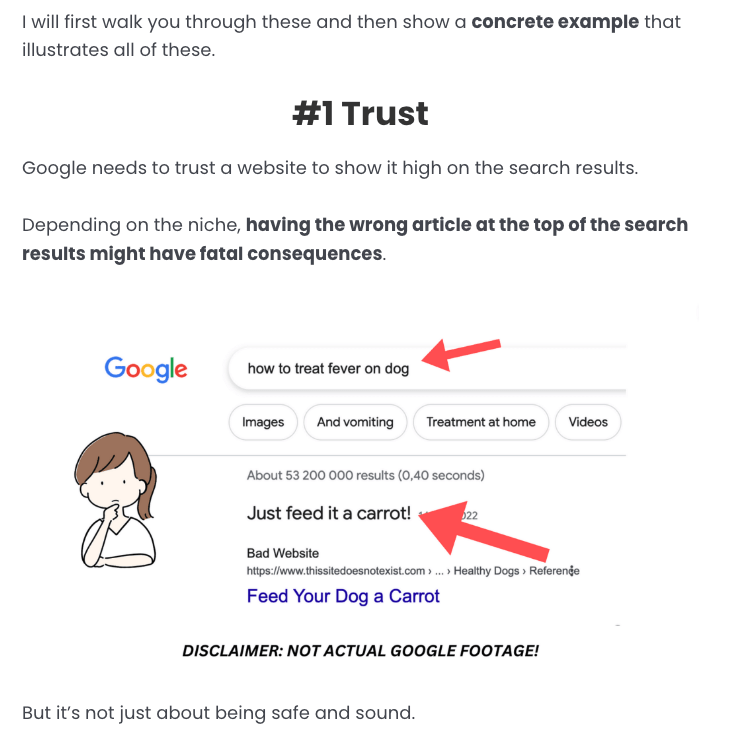
Unsplash or Pexels images won’t get you far. (Although they can still visually break up the text nicely.)
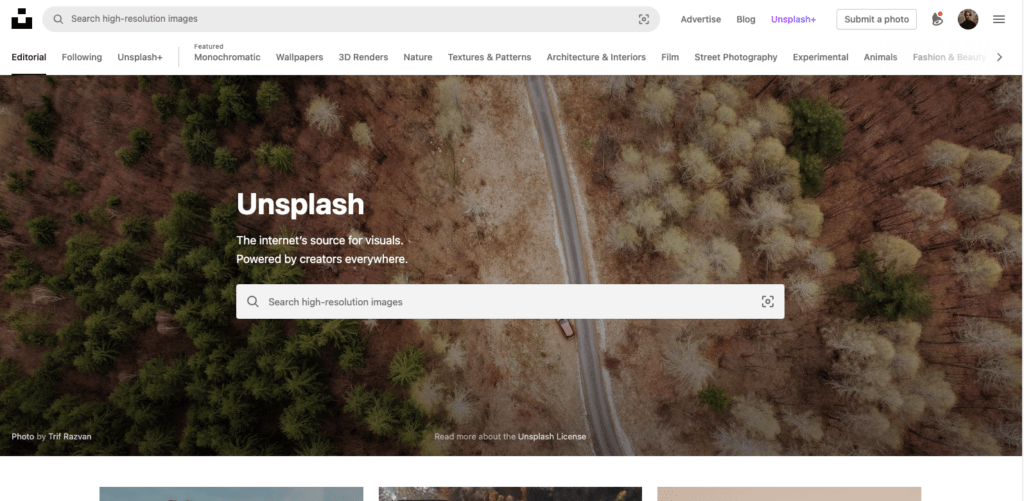
What you can do is ask ChatGPT for images and visualization you should use in different contexts.
Prompt 11
How can I break down this piece of content into a series of shorter blog posts or videos? The content is as follows: [paste your blog post/content here].
How to Use It
To rank on Google, you need to write very detailed and long pieces of content.
Putting together one can easily take 2-5 hours.
But that’s a whole bunch of work for just one post that might never rank.
To maximize benefits, take parts of your posts and turn those into smaller posts.
You can share those on LinkedIn or Medium and have a chance to go viral.
For example, here’s a 3-minute post that would get 0 reads from Google, but it did great on Medium.
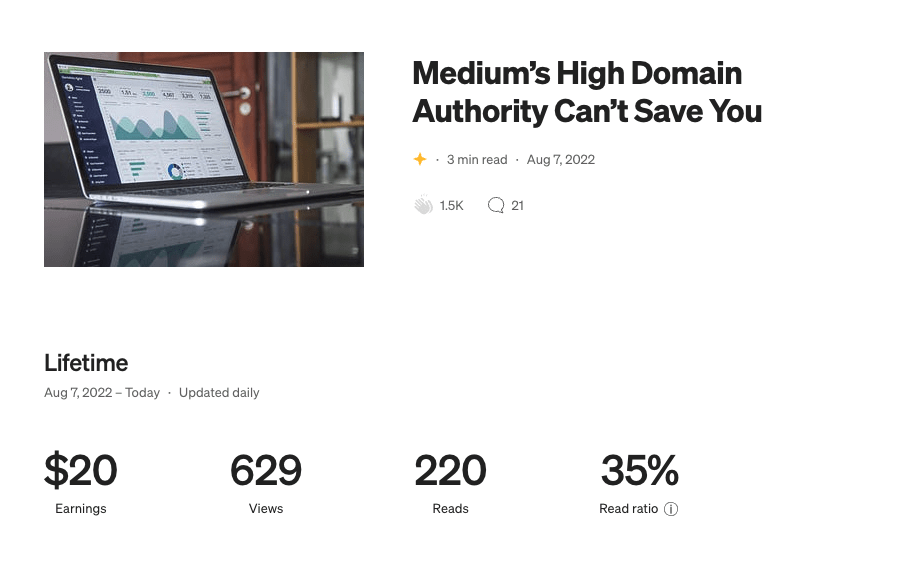
But the problem with this type of content is that it needs to have a “virality factor”. It cannot just be boring text. You need to add twists to those.
This is where ChatGPT can help.
You can send ChatGPT a blog post (or an outline) and ask it to come up with “viral posts”.
Heck, you can even do TikToks or YouTube shorts about those.
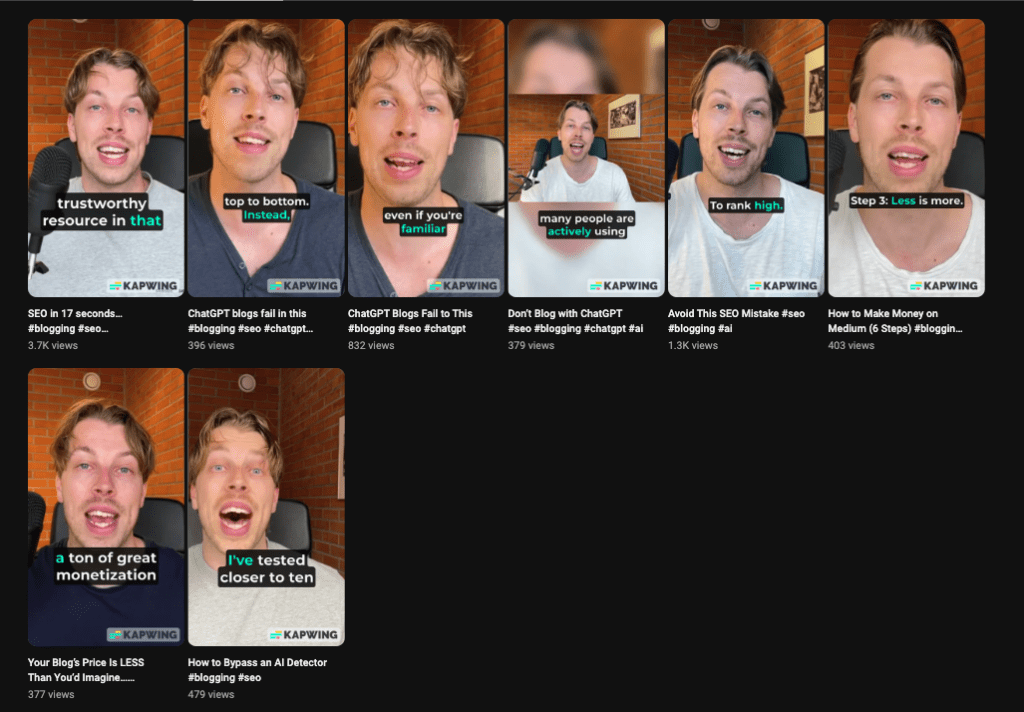
The point is that you can get multiple pieces of content with relatively minimal extra work.
Prompts to Avoid
Before you go, it’s important to remember that ChatGPT cannot do everything. Not even close!
Avoid these types of prompts to ChatGPT.
Write a blog post about [topic].
That type of content is too shallow to rank on Google. I’ve tried it and even with some optimization, edits, and engineering skills, Google didn’t rank my posts.
Check facts about [topic].
There’s always uncertainty and ChatGPT makes a ton of mistakes. You need to make sure the post is factually correct and plagiarism-free (which is almost impossible to do).
Rephrase this blog post.
Don’t copy others’ work and rephrase it to hide the footsteps. That’s not ethical. But it’s also not going to work because Google can tell if a post “adds to the internet” or not.
Write a review about something.
ChatGPT cannot review because it hasn’t used the tools or even knows what those are. Once again, it’s not only ethical but it’s just a waste of time as it simply doesn’t work on Google.
Anything that relates to trends.
The training data is old and doesn’t reliably capture recent events
But remember to experiment with AI. Don’t restrict yourself to the prompts that I showed you today.
But don’t expect too much either!
The Limitations of AI in Blogging
At the beginning of this post, I told you why I do not use AI to write content.
I only use it in very few tasks and it doesn’t really speed up my workflow.
Here are some reasons why.
#1 AI Doesn’t Think
AI doesn’t understand context like humans.
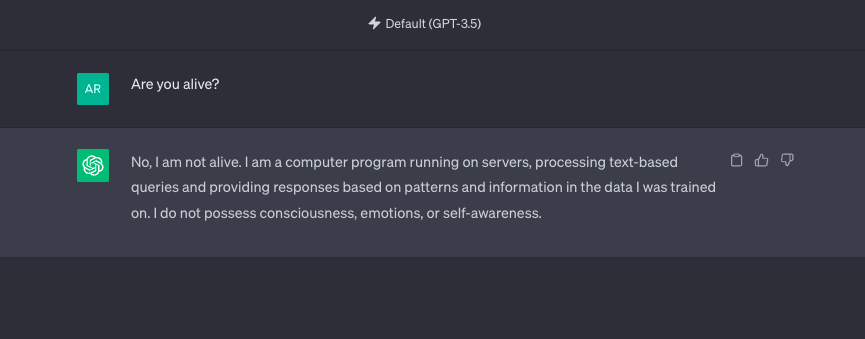
Even though ChatGPT can talk about what is a dog, it has no idea what a dog actually is.
It’s basically a statistical coincidence that it produces text that gives a proper answer.
Obviously, ChatGPT is very often spot-on with basic facts and questions.
But there’s no guarantee that it’s indeed right.
Thus, you always need to do the research for the blog posts.
It’s exactly why you cannot really generate blog posts from A to Z with ChatGPT—not even close.
#2 Lack of Emotions
Also, AI doesn’t have emotions.
AI-written content cannot really connect with the audience on a deeper level.
The fact that AI cannot interact with people, join communities, and understand the subtle nuances in different niches makes the content shallow.
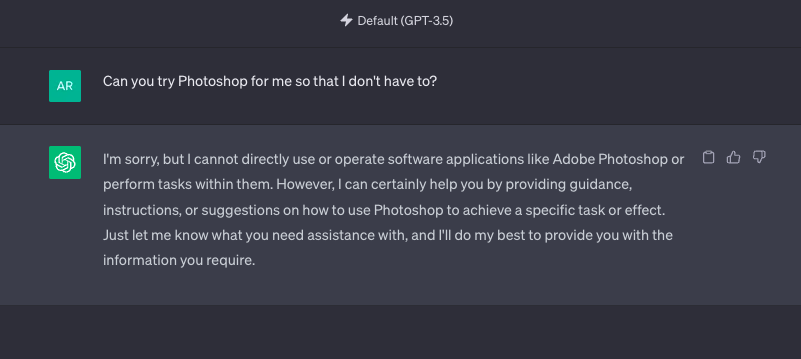
#3 Lack of Illustrations
Also, ChatGPT cannot generate useful images for a blog post.
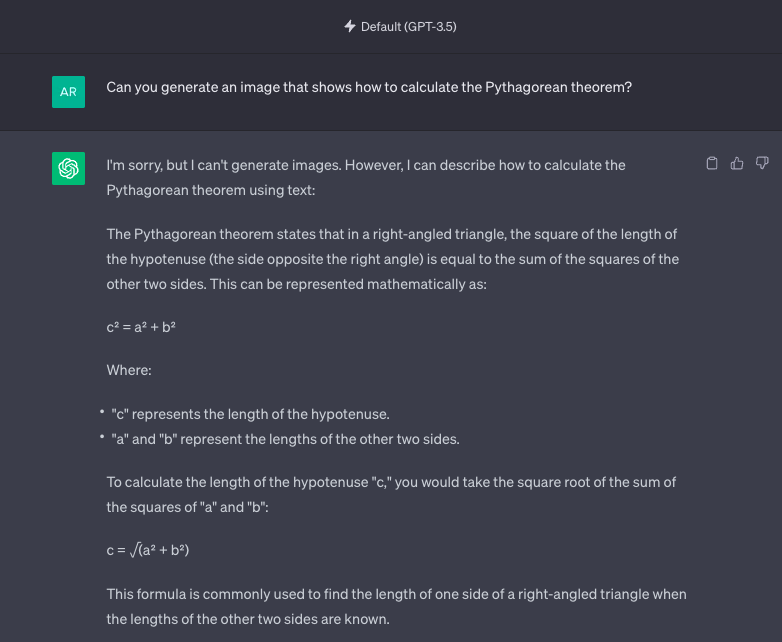
These days, when people are highly visual, a blog post needs to have dozens of illustrations and useful images that actually help understand the text.
Of course, you can use AI tools to generate artistic images.

But you cannot tell ChatGPT to take a screenshot while using software or to go out and take images of a pair of shoes.
This type of stuff is in a make-or-break role when it comes to having success with blog posts.
A post that’s just a wall of text won’t cut it.
It needs to have supporting images and infographics found nowhere else.
#4 Outdated Information
Another problem with today’s AI is that it has issues with staying updated with real-time events.
For example, for a long time, ChatGPT has had a knowledge cutoff in 2021. Anything after that is unknown to ChatGPT.
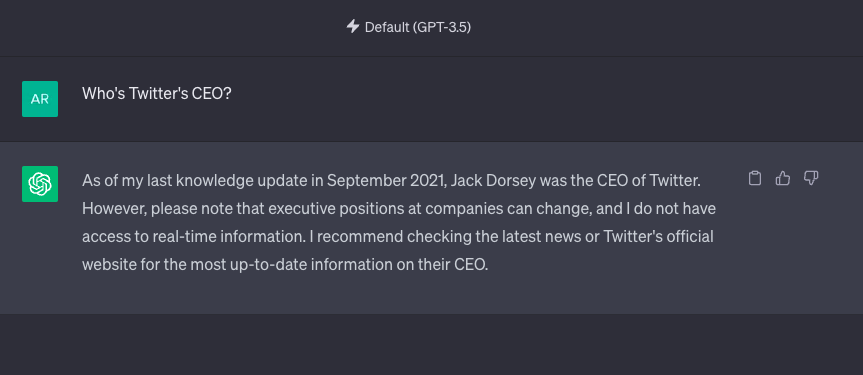
Although I don’t think this one in particular is a big issue. It’s probably something that’s going to be fixed in the near future.
Nonetheless, it’s something that you need to keep in mind as well.
#5 Lack of Originality
There’s no guarantee that ChatGPT doesn’t just go and plagiarise content from some other resource.
It shouldn’t do that for the most part. But it sometimes might—either intentionally or accidentally.
As a writer, it’s your responsibility to check that the content is unique and original.
But this can be tricky because you cannot reliably know the sources that ChatGPT used.
With all this in mind, it’s good to consider ChatGPT as an assistant—not a replacement.
It can offer efficiency and increase productivity, but it does not offer autonomy.
ChatGPT Alternatives?
The internet is full of awesome AI-powered writing and productivity tools.
But to be honest, most of them aren’t that much different.
And none of those can surpass the quality of ChatGPT. This is because (at the moment) ChatGPT is the leading AI model and most AI startups heavily rely on it.
So if you’re using AI to generate text, there’s a big chance it’s using ChatGPT behind the scenes.
The Future of Blogging with AI
Nobody knows what the future of AI will look like.
It might quickly spiral into something one would never imagine possible.
But the progress could just as well slow down.
For bloggers, today’s AI is not a threat.
As a matter of fact, those who try to use AI as shortcuts for blogging are just jumping from the train, freeing up space for truly good content.
Also, there’s content that AI simply cannot write—at least not now or in the near future.
Consider reviews for example.
Nobody wants to read an AI-written review about a pair of shoes.
Instead, people want to read those from other people who actually demonstrate using the shoes.
As long as there are no human-like robots that roam around the world, this type of content always has to be written by a real person.
Thanks for reading. Happy experimenting!
